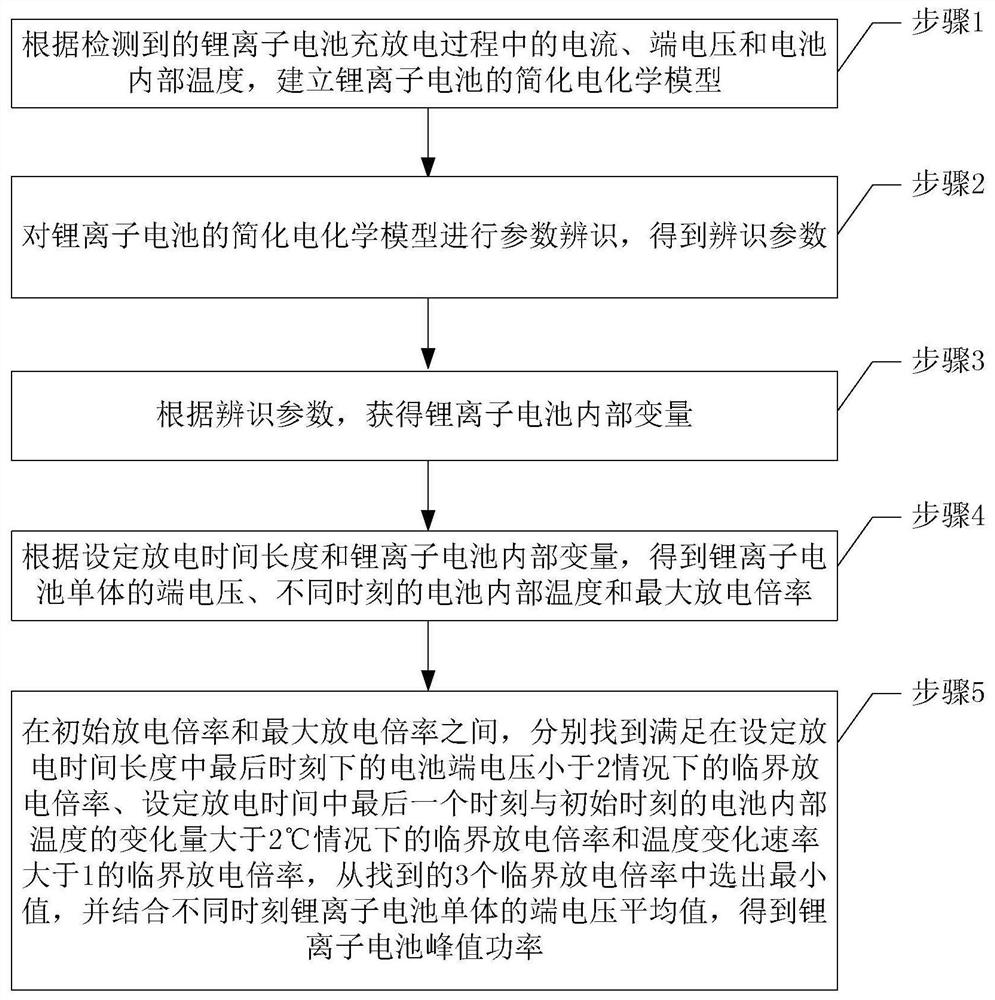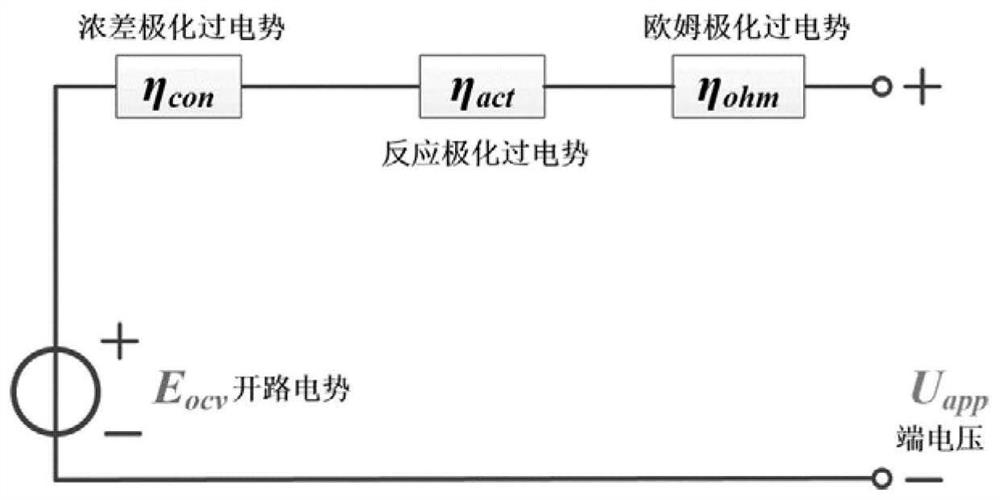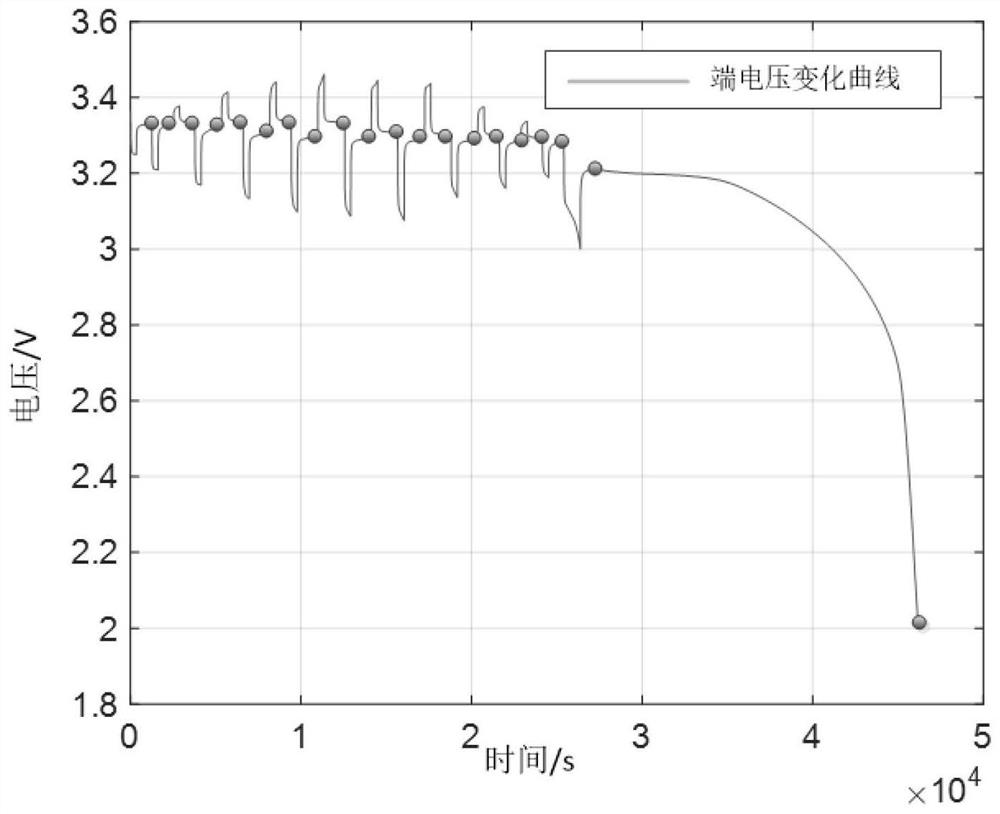Lithium-ion battery peak power prediction method considering thermal effect
A lithium-ion battery, peak power technology, applied in the direction of measuring electricity, measuring devices, measuring electrical variables, etc., can solve the problem of inaccurate peak power, achieve the effect of accurate battery peak power and battery life protection
- Summary
- Abstract
- Description
- Claims
- Application Information
AI Technical Summary
Problems solved by technology
Method used
Image
Examples
specific Embodiment approach 1
[0099] Specific implementation mode 1: refer to figure 1 and figure 2 Specifically describing this embodiment, the method for predicting the peak power of a lithium-ion battery considering the thermal effect described in this embodiment includes the following steps:
[0100] Step 1. According to the detected current, terminal voltage and internal temperature of the lithium-ion battery during charging and discharging, a simplified electrochemical model of the lithium-ion battery is established;
[0101] Step 2, performing parameter identification on the simplified electrochemical model of the lithium-ion battery to obtain identification parameters;
[0102] Step 3. Obtain the internal variables of the lithium-ion battery according to the identification parameters;
[0103] Step 4. According to the set discharge time length and the internal variables of the lithium-ion battery, the terminal voltage of the lithium-ion battery cell, the internal temperature of the battery at di...
specific Embodiment approach 2
[0105] Embodiment 2: This embodiment further describes the method for predicting the peak power of a lithium-ion battery considering the thermal effect described in Embodiment 1. In this embodiment, in step 1, the simplified electrochemical model of the lithium-ion battery is: :
[0106]
[0107] In the formula, U app is the terminal voltage of the lithium-ion battery, U p and U n are the positive and negative open circuit potentials, respectively, y surf and x surf are the lithium ion concentration on the solid phase surface of the positive and negative electrodes, respectively, R is the ideal gas constant, F is the Faraday constant, T is the internal temperature of the lithium ion battery, c 0 is the initial lithium ion concentration in the electrolyte, m p and m n is the intermediate variable, Δc 1 and Δc 2 is the lithium ion concentration at the positive and negative current collectors relative to the initial lithium ion concentration c in the electrolyte 0 The...
specific Embodiment approach 3
[0108] Embodiment 3: This embodiment further describes the method for predicting the peak power of a lithium-ion battery considering the thermal effect described in Embodiment 2. In step 2, the identification parameters specifically include:
[0109] Battery state of charge:
[0110]
[0111] In the formula, soc(t) is the state of charge of the battery at time t, I is the external current, Q all is the discharge capacity of the single battery;
[0112] Battery open circuit voltage:
[0113] E ocv =U p [y 0 +D y (1-soc)]-U n [x 0 -D x (1-soc)] Equation 3,
[0114] In the formula, E ocv is the battery open circuit voltage, U p is the positive open circuit potential curve, U n is the negative open circuit potential curve; D y is the variation range of the amount of lithium intercalation in the positive electrode, D x is the variation range of the amount of lithium intercalation in the negative electrode, y 0 is the initial lithium intercalation amount of the pos...
PUM
 Login to View More
Login to View More Abstract
Description
Claims
Application Information
 Login to View More
Login to View More - R&D
- Intellectual Property
- Life Sciences
- Materials
- Tech Scout
- Unparalleled Data Quality
- Higher Quality Content
- 60% Fewer Hallucinations
Browse by: Latest US Patents, China's latest patents, Technical Efficacy Thesaurus, Application Domain, Technology Topic, Popular Technical Reports.
© 2025 PatSnap. All rights reserved.Legal|Privacy policy|Modern Slavery Act Transparency Statement|Sitemap|About US| Contact US: help@patsnap.com



